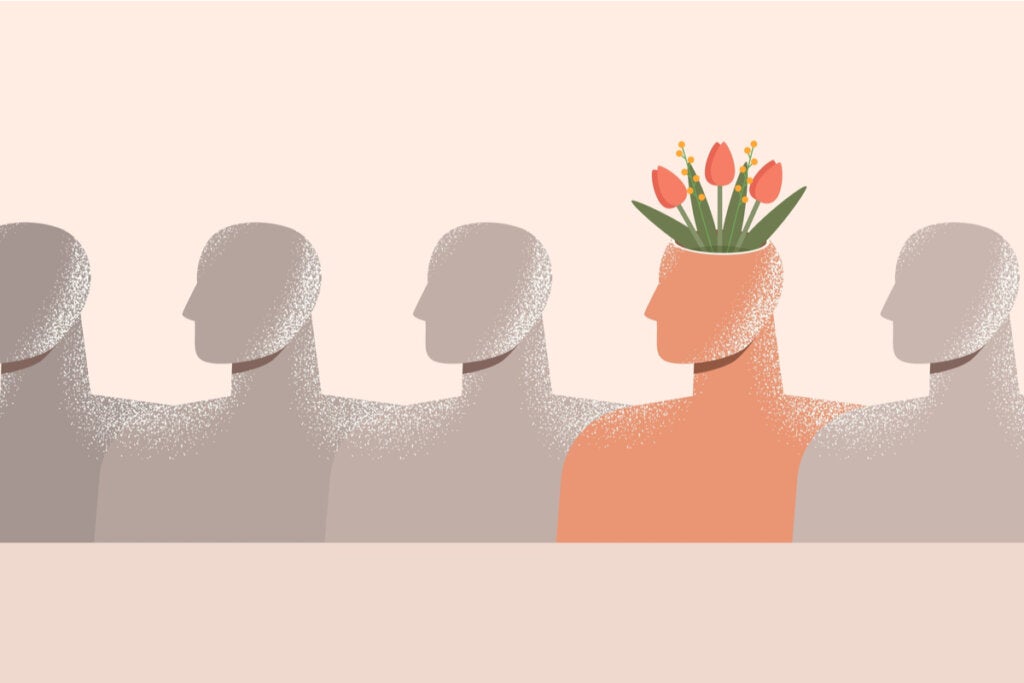Social intelligence enables harmonious coexistence, so we must all work on it.
Some people have a knack for impressing and making a positive impression wherever they are. Others, on the other hand, are like cacti, imbuing themselves with every conversation—their mere presence seems menacing. Why are we so different when it comes to relationships? Why are some so skilled and others so problematic? the Social intelligence theory Developed by Daniel Goleman in 2006 provides interesting answers to these questions.
Before him already dealt with a psychiatrist Edward Thorndike It was with this topic that he coined the term social intelligence in 1920. Howard Gardner later developed the theory of multiple intelligences, which also takes this aspect into account. But today we focus on Daniel Goleman’s theory, which reminds us of that The ability to establish healthy and effective relationships Educational, social and personal factors.
“When we focus on others, our world expands. Our problems become peripheral to the mind and thus seem smaller, and we increase our ability to communicate or act compassionately.”
Daniel Goleman
Social intelligence: what is it?
Although there is no unified definition of social intelligence yet, we can use it as possibility Understanding how to navigate the complex ocean of human relationships with efficiency, comfort and satisfaction. This includes family, emotional, and professional relationships, as well as any other scenario in which we interact with other people.
It should be noted that this concept should not be viewed as an isolated variable of general intelligence itself. It is another variable that helps us adapt to any environment and directly affects our happiness and well-being. Because of its scope, social intelligence is of great interest to the scientific community.
The Universities of Texas and Tromsø (Norway) have one Stady published in which they introduce an interesting measure of social intelligence. It allows us to assess whether a person is able to understand social situations, whether they have sufficient skills to deal with them, and whether they display adequate social awareness.
Additionally, figures like psychologist Martin Seligman assert that this dimension is in fact a cognitive force and psychological screen that empowers us as a society and contributes to our happiness.
“The ability to listen seems like a natural talent. But like the other components that make up social intelligence, a person can train and improve their listening skills simply by paying more attention.”
Daniel Goleman
Daniel Goleman’s Social Intelligence Theory
Daniel Goleman describes it in his book Social Intelligence: Those who can get close to others benefit the most from life ¹ His theory of social intelligence as a useful tool for anyone’s development. It reminds us that we are all neurobiologically programmed to connect with others. But upbringing, personality, or environmental factors often weaken this competency. However, it is never too late to start working on it.
Social intelligence theory includes the following components:
social awareness
Social awareness tracks the powerful ability to connect to the reality of others. Our brains are designed to empathize with others, regardless of their culture, background, circumstances, or context. Reading the social cues around us helps us navigate life better.
This variable is shaped by a series of elements that build and make it possible:
- social cognitionThe ability to understand the workings of all social experiences.
- Primary empathyThe ability to feel within oneself the emotions and feelings of others through non-verbal communication.
- Empathy accuracy: In this case, it is not enough to just feel what others are going through, but also to understand the intentions of others.
- synchronousSyntony: In social intelligence theory, syntony allows us to be fully receptive and attuned to another.
social serenity
Can you communicate well with colleagues or even strangers? Are you good at making agreements with others? Are you good at handling disagreements with your partner?
Our equanimity represents our fluency and effectiveness in our relationships with others. It is defined by the following properties:
- impactYou are able to make a positive impact.
- synchronizationYou are able to interact with your counterpart through non-verbal communication.
- CareYou are interested in the needs, feelings, and thoughts of others. This is a key component of the theory of social intelligence.
- self displayYou know how to approach others, introduce yourself and show yourself in a warm and friendly manner.
Conclusion
The cornerstone of Daniel Goleman’s theory of social intelligence is empathy. Without this psychological glue, human contact would not be possible and harmonious. A lack of empathy can manifest itself in extremely dysfunctional and selfish behavior. Fortunately, many of us have this valuable tool that can serve as a cog in any conversation or situation with others.
If we were more proficient in all of the components listed here, we might be better at problem-solving. We must therefore all work on our social intelligence in order to make harmonious coexistence possible.
Reading suggestions
- Social Intelligence: Those who can get close to others benefit the most from lifeDaniel Goleman, Drummer 2017
You may also be interested in this…

“Total coffee aficionado. Travel buff. Music ninja. Bacon nerd. Beeraholic.”









More Stories
Coral Seeding: Artificial Insemination Makes Coral More Heat Tolerant
Fear, Anger, and Denial: How People Respond to Climate Change – Research
LKH Graz: Using radiation to combat heart arrhythmias